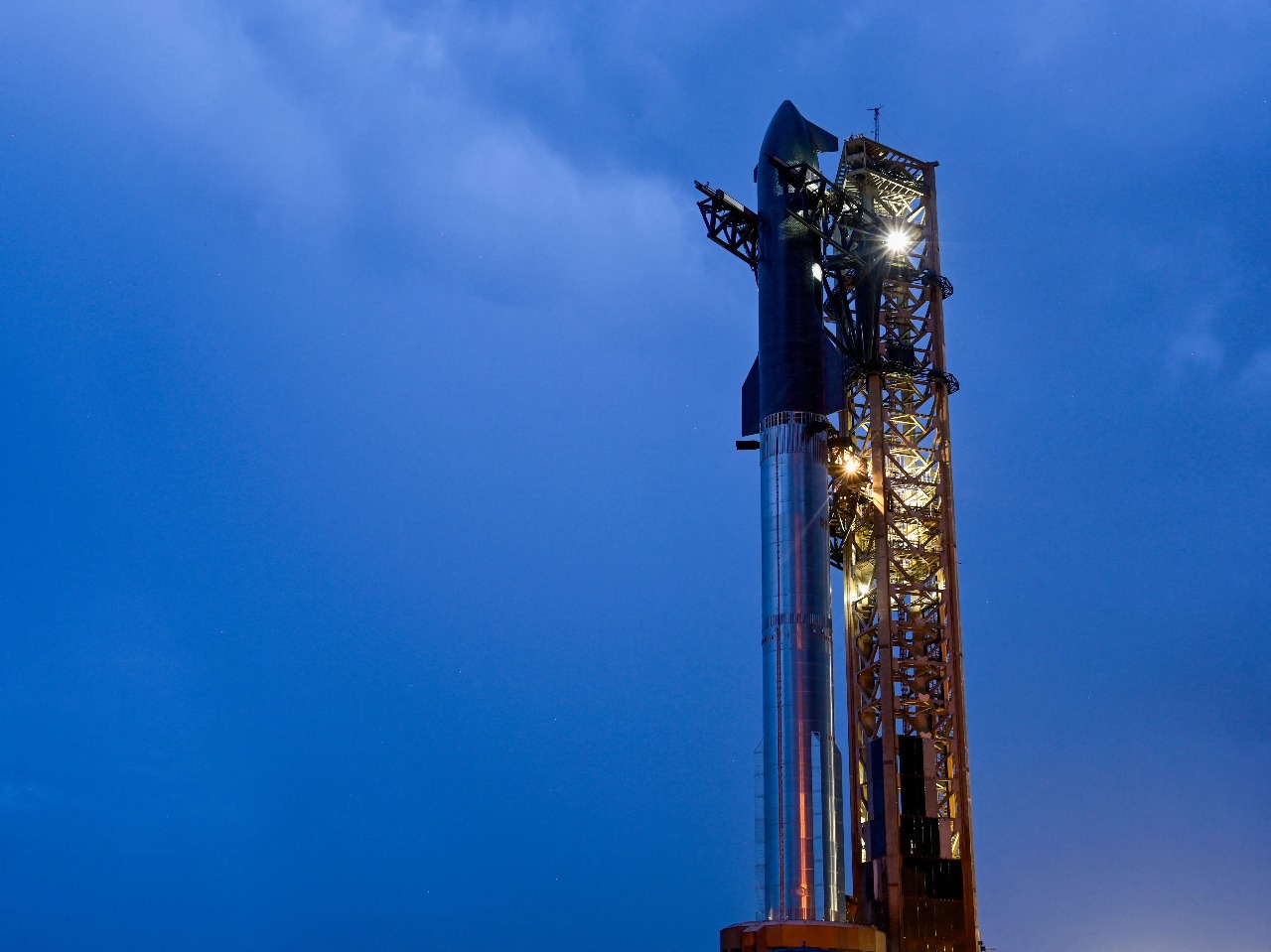
Follow WOWNEWS 24x7 on:

SpaceX’s highly anticipated 10th integrated test flight of its Starship rocket was scrubbed early Monday morning due to unfavorable weather conditions at its launch site in Boca Chica, Texas. The launch, already delayed once due to a ground systems anomaly, was called off just 40 seconds before liftoff as anvil clouds hovered over the area, posing a lightning risk.
This marks the second consecutive postponement for Starship Flight 10, a mission central to SpaceX’s long-term goals including Mars colonization and NASA’s Artemis program.
Launch Attempt and Scrub Details
- Scheduled liftoff was set for 5:00 AM IST (6:30 PM CT) from SpaceX’s Starbase facility
- Countdown halted at T-minus 40 seconds due to persistent cloud cover
- SpaceX confirmed the delay via its official X account, citing weather as the primary reason
- Elon Musk later clarified that anvil clouds posed a lightning threat, forcing the team to stand down
Mission Objectives and Technical Background
- Flight 10 aimed to test the upper stage’s structural integrity during reentry and its ability to relight one of its six Raptor engines mid-flight
- The Super Heavy Booster was set to perform flight experiments before attempting an offshore landing in the Gulf of Mexico
- The upper stage Ship was expected to deploy eight Starlink simulators and splash down in the Indian Ocean
- Hardware upgrades included redesigned grid fins on the booster—now 50 percent larger and reduced from four to three—for improved descent control
Recent Setbacks and Development Timeline
- All three previous Starship launches in 2025 ended with the loss of the upper stage Ship due to communication failures and structural anomalies
- Flight 9 saw the Super Heavy Booster lost during experimental maneuvers over the Gulf of Mexico
- A static fire test in June involving Ship 36 resulted in an explosion, prompting further design revisions
- These repeated setbacks have slowed Starship’s development, potentially impacting NASA’s lunar timelines and Musk’s Mars ambitions
Strategic Importance of Flight 10
- This test flight is pivotal for validating SpaceX’s iterative design changes and operational protocols
- Success would mark a turning point in restoring confidence in Starship’s reliability and scalability
- Elon Musk has projected a future cadence of up to 24 Starship launches per day by the early 2030s, though current delays make that goal appear distant
- The mission also holds symbolic weight as SpaceX eyes a crewed Mars mission by 2026, possibly featuring Tesla’s Optimus robot
Next Steps and Revised Timeline
- SpaceX is now targeting a fresh launch window on August 26, weather permitting
- Engineers are also addressing a ground-side liquid oxygen leak that contributed to the initial delay on August 24
- The company remains optimistic, with Musk reiterating his belief in Starship’s long-term viability despite short-term hurdles
Key Highlights Recap
- Launch scrubbed at T-minus 40 seconds due to anvil clouds and lightning risk
- Second delay in two days; first caused by ground systems anomaly
- Flight 10 aims to test upper stage reentry, engine relight, and Starlink simulator deployment
- Booster upgrades include larger grid fins for improved descent control
- SpaceX targets next launch attempt on August 26, pending weather clearance
Sources: Reuters, Mashable, Digital Trends, NDTV, Livemint, SpaceX official X account





